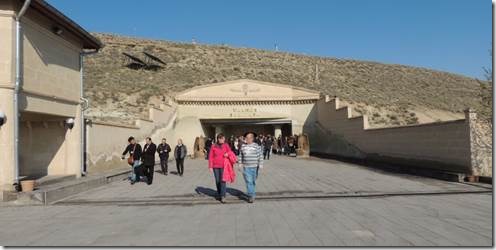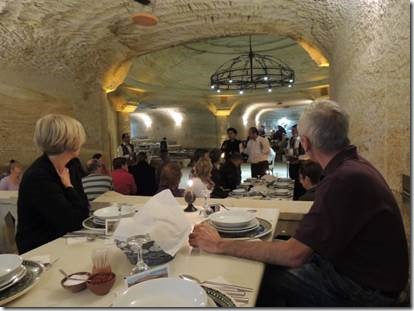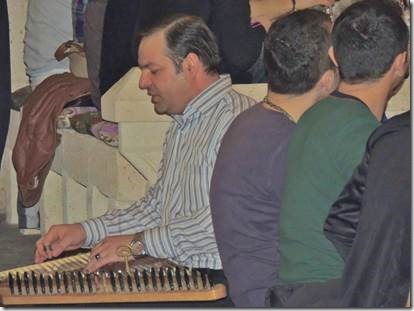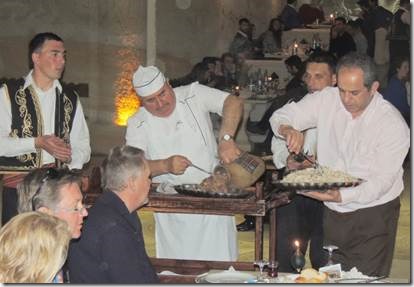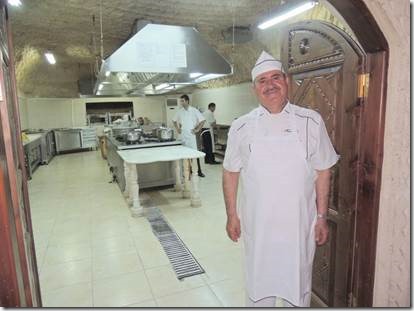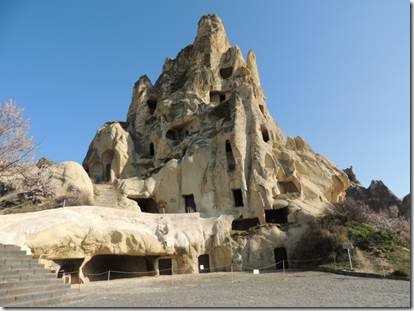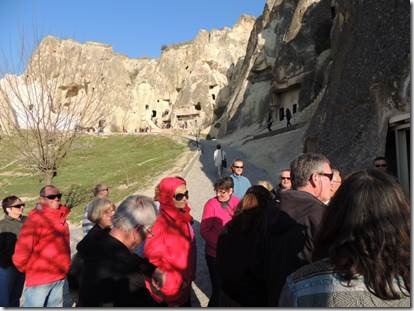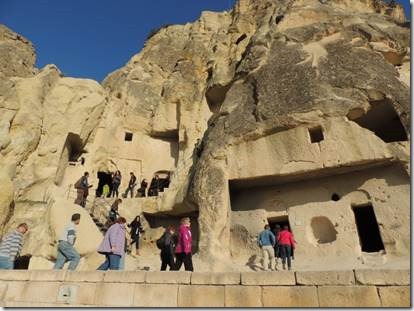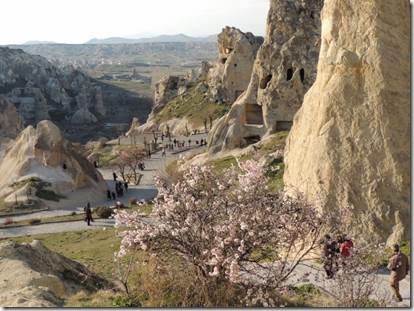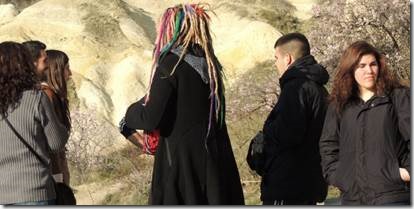Merhaba,
So I’m going through my photos trying to write up these emails wondering…where the hell were we that morning? Afternoon? Next day? I’m not 100% sure where we were at each stop. I had read some of my Cappadocia book to understand some of the geologic causes with the volcanoes, wind, rain etc creating the perfect conditions for the creation of the cave dwellings and the what the locals called “peri bacalar” (Fairly Chimneys.”) And I knew that it was a refuge for persecuted Christians. But for me the area was a place of beauty for walking and taking photos. So that’s what I did.
Ru
Kapadokya Day 1
Our first day in Kapadokya brought perfect weather. About 12 folks boarded the bus at 5 am for a 6 am hour balloon flight they described as spectacular. Randal and I took a pass, my one hot air balloon experience years ago in Roanoke was enough forever. It was tranquil and safe and I hated pretty much every minute. Our Kapadokya day started at 9:30 am and went on for a very long full day. We visited areas most famous for their geologic structure and areas more famous as cave communities for early Christians. Cappadocia is also famous for its pottery and carpets and we visited shops selling both.
http://www.cappadociaturkey.net/ gives basic info.
This excerpt from the New York Times pretty much sums it all up…..and explains what my photos try to show.
“The conical formations are the result of volcanic eruptions that took place millions of years ago. Eons of wind, rain and other forces of nature have eaten away at the volcanic rock creating tufa, a soft and malleable stone. Many of these cones, known as fairy chimneys, contain caves and labyrinths.
As early as the third century, those chimneys became a hiding place for early Christians who fled persecution from the Romans, and then later from raiding Muslims. They dug deep into the rock, carving out underground cities that went eight stories below ground, as well as thousands of cave chapels and monastery cells.
As recently as 20 years ago, most of the cave dwellings were empty — abandoned for more modern, concrete homes. In the last several years, though, affluent Turks and foreigners have started turning them into second homes and, in a few cases, boutique hotels like the Cappadocia Cave Suites and the recently opened Anatolia Houses.
“It was the soap opera ‘Asmali Konak’ that started it all,” said Laura Prusoff, an American who lives in the tiny Cappadocian village of Ortahisar, referring to a Turkish television series in 2002 and 2003 that was set in Cappadocia. “It made Cappadocia famous among Turks and put it on the map.”
http://travel.nytimes.com/2007/09/09/travel/09next.html
The landscape of Cappadocia had been described as “lunar” “imaginary” “fairy chimneys.” What grabbed me was the starkness of it. No trees, no bright colors. Nothing but rock and scrub and sand. Imagine tall pine trees turned to stone. Whole families of them frozen in place to watch over the centuries. In China I met a stand of bamboo trees that became my friends because they seemed alive to me. The Cappadocia stone statues came alive too, or would have if I’d visited them as often as I visited my bamboo friends. Each structure seemed to have its own personality. Some had been carved by the wind and rain into human or animal shapes. But many looked like the “forest primeval” turned to stone.
This is the forest primeval. The murmuring pines
and hemlocks,
Bearded with moss, and in garments green, indistinct
in the twilight,
Stand like Druids of eld, with voices sad and pro-phetic,
Stand like harpers hoar, with beards that rest on their
bosoms.
Loud from its rocky caverns, the deep-voiced neigh-
boring ocean
Speaks, and in accents disconsolate answers the wail
of the forest.
http://www.hwlongfellow.org/works_evangeline.shtml
In junior high we had to read Evangeline and it pretty much meant nothing to me except the first few lines that have stuck forever. But when I saw the stone druids at Cappadocia I immediately thought of the poem. Both the stone churches of Cappadocia and the poem Evangeline illustrate how people are persecuted and driven away because of their beliefs.
|
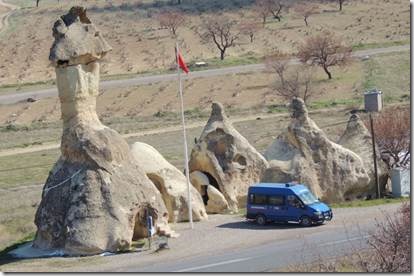
Comic Relief! The office of the Jandarma or Smurfs houses.
http://www.waymarking.com/waymarks/WMFZ6F_Jandarma_Pasabagi_Turkey
|
| |
|
This was our first stop and rather than wait around and actually listen to what our guide Taṣ had to say I headed for the path through the stone structures.
http://www.goreme.com/pasabag.php tells about Pasabagi
|
| |
| |
|

|
| |
|
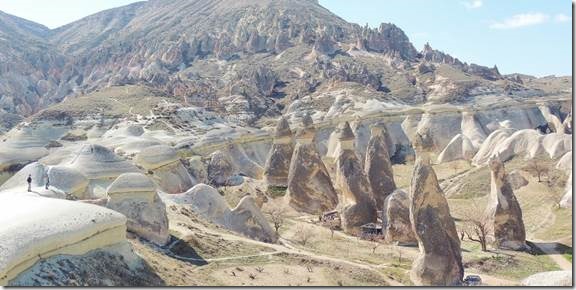
|
|
Fairy Chimneys or an army of stone soldiers?
|
| |
|

They sort of look like stone Dervishes with their huge turbans and flowing capes.
|
| |
|
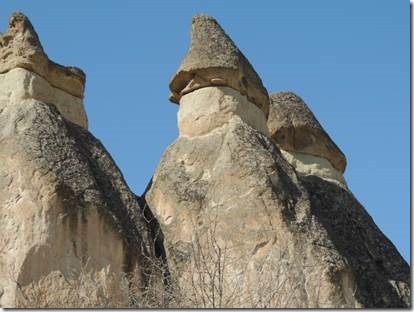
Stone hats on stone heads….
|
| |
|
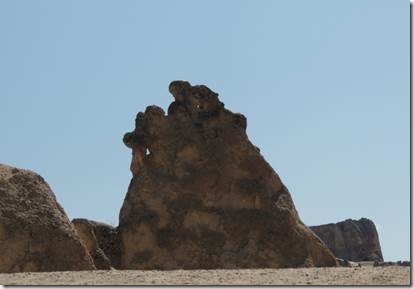
“In every block of marble I see a statue as plain as though it stood before me, shaped and perfect in attitude and action. I have only to hew away the rough walls that imprison the lovely apparition to reveal it to the other eyes as mine see it.” http://www.ncbi.nlm.nih.gov/pmc/articles/PMC1079389/
An unfinished Michelangelo sculpture? Or a male version of the Pieta?
|
| |
|
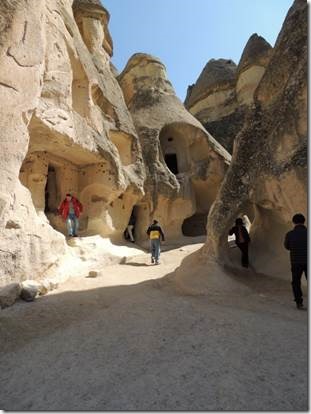
Exploring the stone houses.
Thinking about this, cave homes make sense as there wasn’t an abundance of trees and the stone was soft enough to be carved into. Just as in Pueblo Colorado, caves were used for homes to take advantage of the climate and the resources. Our guide Taṣ believes from his studies that Hittites were the first people to actually live in the caves. “ Cappadocia lies in the very heartland of Hittite country whose relics are present in many locations. The Egyptians called the land ‘Kheta’, the Israelis ‘Chet’ of ‘Chittim’; the Hittites called their country ‘Hatti.’ Cappadocia by M. Ali Birant
|
| |
|
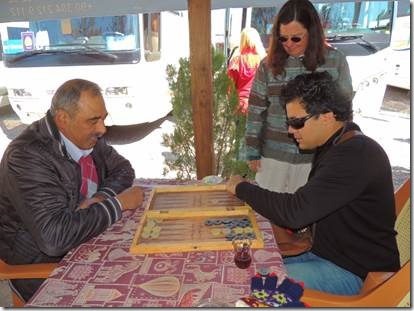
Kὄrhan and Taṣ entertained themselves with a game of backgammon while Mary looks on,
|
| |
| |
| |
|
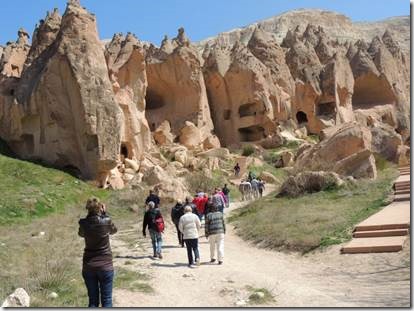
These cave structures housed a religious community I think we’re at the Gὄreme Open Air Museum
“Persecuted by the pagan Roman emperors, and their cesars of the Orient and fleeing for their lives the early Christians sought and found safe refuges among the rugged hills of Cappadocia where they settled and lived in remote monastic colonies like Gὄreme, Zelve, or the valley of Ihlara. They decorated their rock-cut churches and dwellings with colorful frescos, many of which have survived the calamities of the bygone centuries to our delight.” Cappadocia
|
| |
| |
|
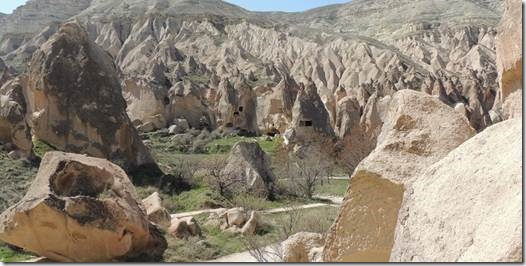
|
| |
|
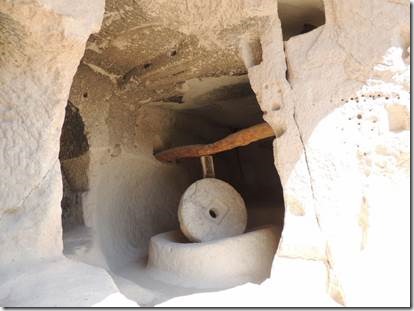
|
| |
|
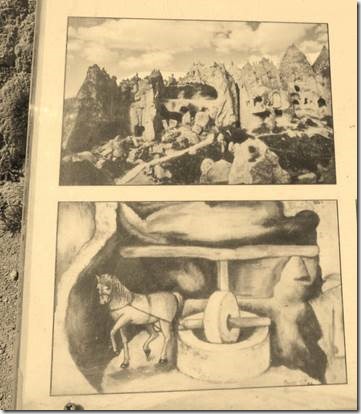
|
| |
|
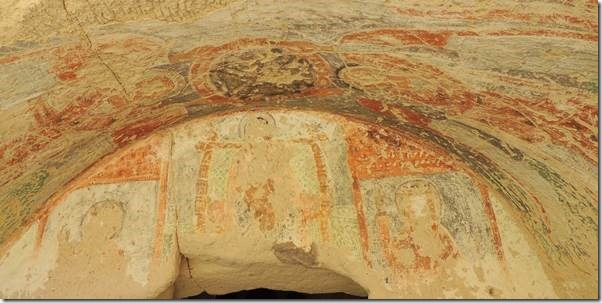
Rock Church fresco
|
| |
|
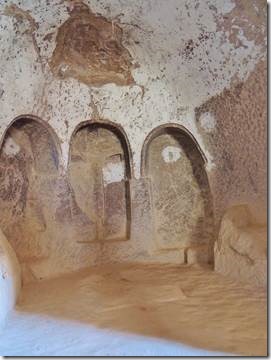
A stone cross carved into the cave
|
| |
|
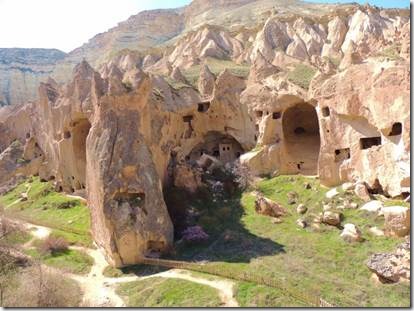
|
| |
|
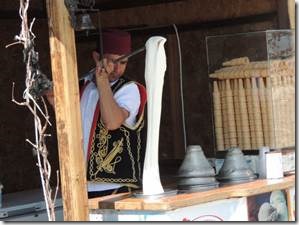 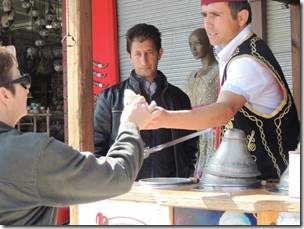
A snack and souvenir stop….Turkish ice cream is an acquired taste. It has sometime called mastic in it which resembles chewing gum…..sort of. Terry gave it a try. Our cruising friend Cindy had some family with her on this trip. Her sister, niece and niece’s pal, all from Florida. They were a great addition and were willing and eager to try everything.
|
| |
|
Then it was off for a quick stop in Ortahisar.
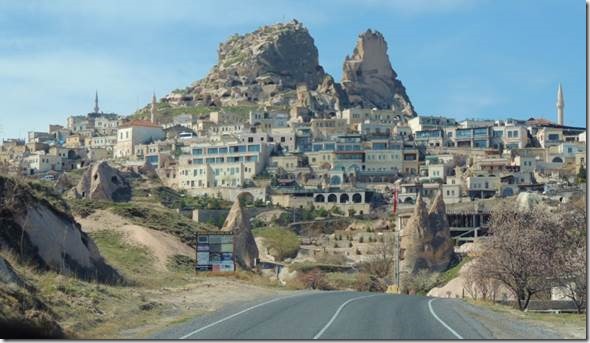
http://www.goreme.com/ortahisar.php
|
| |
|
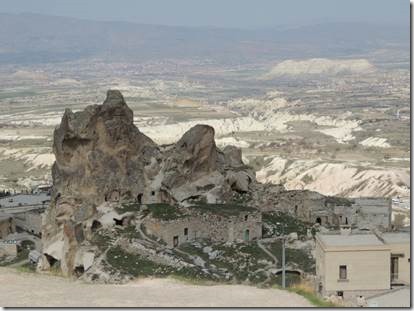
|
| |
|
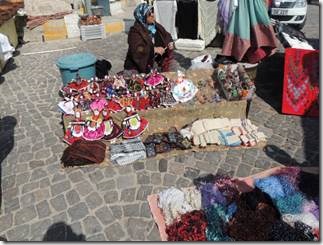 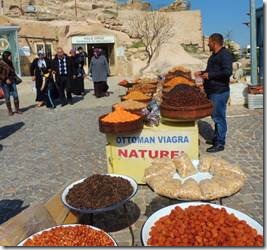
|
| |
|
Next email, lunch under a mountain
|
